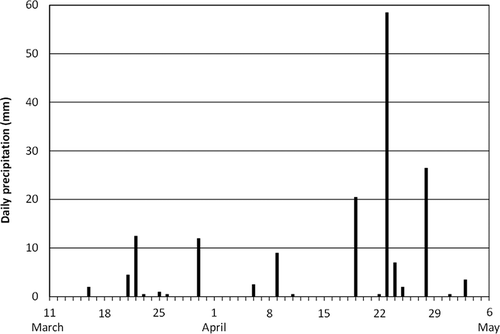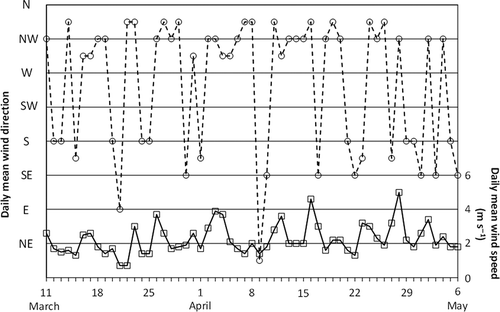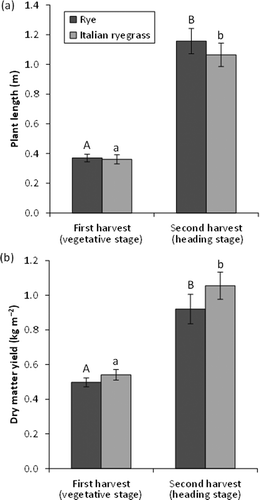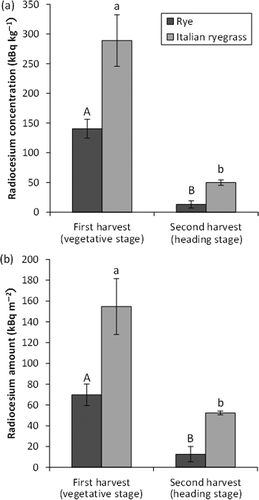Figures & data
Table 1 Soil chemical properties in the experimental fields.
Figure 1 Daily precipitation from the day of the earthquake on March 11, 2011, to the last harvesting date on May 6, 2011. Rye (Secale cereale L.) and Italian ryegrass (Lolium multiflorum Lam.) were harvested during their vegetative stage on March 31, 2011 (first harvest) and at the heading stage (second harvest) on April 27 and May 6, 2011, respectively.

Figure 2 Daily mean wind direction (circles) and wind speed (squares) from the day of the earthquake on March 11 to the last harvesting date on May 6, 2011. Rye (Secale cereale L.) and Italian ryegrass (Lolium multiflorum Lam.) were harvested during their vegetative stage on March 31, 2011 (first harvest) and at the heading stage (second harvest) on April 27 and May 6, 2011, respectively. NE, northeast; E, east; SE, southeast; S, south; SW, southwest; W, west; NW, northwest; N, north.

Figure 3 Changes in (a) plant lengths and (b) dry matter yields of rye and Italian ryegrass harvested in the spring of 2011 (first harvest, vegetative stage, March 31 for both species; second harvest, heading stage, April 27 for rye and May 6 for Italian ryegrass). Results are means ± standard deviation (n = 3). Values labeled with different uppercase and lowercase letters differ significantly between harvests for rye (Secale cereale L.) and Italian ryegrass (Lolium multiflorum Lam.), respectively (Welch’s t-test, P < 0.05).

Figure 4 Changes in (a) radiocesium concentrations per unit mass (dry weight basis) and (b) radiocesium amounts per unit area in rye and Italian ryegrass harvested in the spring of 2011 (first harvest, vegetative stage, March 31 for both species; second harvest, heading stage, April 27 for rye and May 6 for Italian ryegrass). Results are means ± standard deviation (n = 3). Values labeled with different uppercase and lowercase letters differ significantly between harvests for rye (Secale cereale L.) and Italian ryegrass (Lolium multiflorum Lam.), respectively (Welch’s t-test, P < 0.05).

Table 2 Comparison of weathering half-lives (Tw) for radiocesium in the present study with previously reported values.
Table 3 Yield of rye grown in the 2012 period, and radiocesium levels in the rye and the soil.
